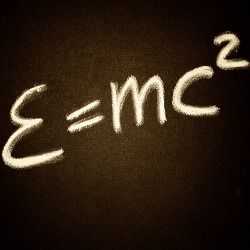
Blockchain Changes Everything, Here’s Why
In recent years we’ve seen an explosion of interest in blockchain technology. It’s very easy to dismiss this as just another passing fad. However before you do that, it would be prudent to contemplate the fundamental concepts being disrupted.
Traditional Recording Media
Traditional recording media offer four basic operations: create, read, update and delete (CRUD). From stick figures on cave walls to magnetic tape to modern databases these four CRUD operations are fundamental and defining attributes of all record taking. If we want to disable one of these four operation, for example ensure that a record is not updated or deleted, we need to build safeguards around the data. We can put a fence around the cave entrance, lock the magetic tape in a safe or write complex code to enforce permissions to a database record. However all these protections are just that, protections. They don’t change the fundamental nature of the protected record. Given the correct permissions or persistent determination the record can be updated or deleted.
Blockchain
What blockchain brings to the table is a recording media that does not have an update or delete operation. A record can be created or read, that’s it. New records can be added to indicate an update or delete but the original record never changes. Think about that for a moment… a record that, by definition, can never be updated or deleted.
Self Enforcing and Auditing Business Rules
Most databases, in addition to regular records, contain “system” records for things like table permissions and data integrity rules. These database rules tend to remain relatively simple because as complexity increases their utility fades in favor of enforcing business rules at the application layer. What results is a paradigm where the database maintains the most commonly used rules like data types and referential integrity while the application layer contains the more complex business logic that decides the who, what and when of the updates going to the database. This means that although the database can tell you the current state of things, it has no knowledge of the how or why it is that way.
Blockchain turns this model on its head. If we create blockchain records that contain business rules, those records will remain unchanged forever. We can then review the application state at any point in time and know with confidence how the state got to where it was. By extension that can tell us with certainty that the current state is accurate. For any given record we can confirm that it complied with the “business rules record” in effect at that time. (Note “at that time”: Additional business rules records can be added later to amend earlier rules. The point is that for any record we can see that it complied with the rules in effect at that time. It’s like version control + audit logging wrapped in one.)
You may ask, that’s nice but why do we need that level of auditing and enforcement? Glad you asked. That leads to the second massive implication of immutable records.
Open Access
With traditional storage media the idea of a company giving all global employees, vendors and partners unrestricted read/write access to a production database would make one’s hair stand on end. The very concept is so absurd and outside our frame of reference that we may very well never have even thought about it. So let’s do that now.
What would it mean if a production database could be publicly exposed without any risk of data loss or tampering? Anyone across the globe could write to the database. Anyone across the globe could read from the database. Forget the overhead of building out APIs for 3rd party integrations, your database is wide open. The onboarding process is almost non-existent. Anyone with a laptop and an internet connection can connect to your data. Sounds like a dream? It’s not.
Blockchain makes this a reality. By using standard digital signature technology to create records, the authenticity of a given record cannot be disputed. Once a record is created, it can never be modified or removed. This means that partners working on opposite ends of the earth, having never met each other, can securely create and read records on the same database. Joining the database is as simple as generating a public/private key pair. Business rules records (otherwise known as Smart Contracts) can be used to govern the flow of data and business processes. New methods of organizational governance can be introduced whereby people record votes and Smart Contracts execute predetermined actions (i.e. create additional records) based on the outcome of those votes.
Supply Chain
With the almost non-existent on-boarding process, supply chain stake holders across the globe can join the network at any time with minimal cost. Smart contracts can be set up to track the movement of raw materials as they touch each point in the supply chain. Interested parties can easily track, what would otherwise be a massive tangle of supply chain movement and quickly home in on relevant quality events. This will have massive implications for heavily regulated industries such as the Life Sciences, that require rigorous audit-ability and traceability.
Without the limitations imposed by mutable records the new possibilities are endless. It’s on us to expand our minds and dream.

One thought on “Blockchain Changes Everything, Here’s Why”
Hey, thanks for the blog post. Really thank you! Much obliged. Maddi Leslie Olen